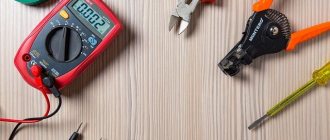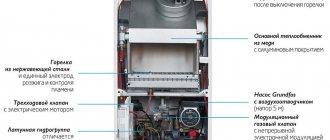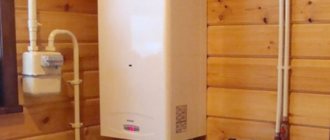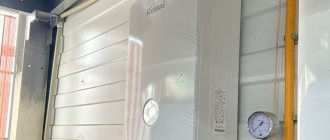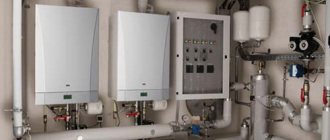Draft is a characteristic that displays the rate of air exchange in the boiler. The gas combustion process requires a continuous supply of air and removal of combustion products (carbon monoxide, carbon dioxide, soot and water evaporation) into the atmosphere.
Types of traction:
- natural;
When burning, the air rushes upward according to the laws of physics and has a high temperature. This ensures the removal of combustion products and the natural flow of air due to its vacuum at the combustion site.
Boilers with natural draft are simple in design, less noisy and do not require additional electricity consumption.
- forced.
This type of draft is carried out due to the forced flow of air into the burner from a blowing device.
It is also controlled by an electronic control system.
Air is taken from the room or from the atmosphere. In the second case, a coxial pipe is often used.
Its design includes outer and inner pipes of different diameters. Through the outer pipe, air is sucked in for its forced supply, and through the inner pipe, carbon monoxide is released.
Boilers with forced draft and coxial tube necessarily have a sealed type of combustion chamber. Their advantages:
- safety, unlike an open combustion chamber;
- high boiler efficiency;
- does not consume oxygen in the room;
- For the boiler to operate, only one hole in the wall is required.
However, there are a number of disadvantages:
- complexity of the design, and, consequently, more complex maintenance and repair;
- noise due to the operation of the electric motor of the inflatable device;
- the need for continuous power supply.
Traction sensor
Definition
The autonomous operation of the gas boiler is carried out thanks to an electronic control system. It provides control using sensors, collecting technical indicators from different parts of the structure. If these indicators deviate from the norm, the control system changes the boiler operating mode or stops its operation.
A gas boiler draft sensor is a monitoring device that determines the presence and degree of draft in the chimney, and also transmits the corresponding signals to the electronic boiler control system.
It is the main device that protects the health and lives of people from the accumulation of carbon dioxide indoors.
What is it needed for
The main functions of the draft sensor are to determine the draft force and completeness of gas combustion, as well as ensure safety during operation of the gas boiler by sending a signal to the control system about insufficient draft.
If the process of removing carbon monoxide is disrupted, it accumulates in the room, which negatively affects human health, and, with a large volume of accumulated combustion products, poses a serious threat to human life.
The draft sensor detects and prevents incorrect operation of heating equipment.
Where is it located?
Installing a draft sensor in gas boilers is a prerequisite for their operation. This is approved by the relevant legislative act.
As a rule, the installation location of the sensor is the smoke hood or a section of the boiler body near the ventilation duct.
The draft sensor is not installed by the manufacturer directly into the flue or is separated from it by a special thermal insulating material. This type of installation eliminates overheating of the draft sensor due to direct contact with a hot surface.
The draft sensor, like the chimney, requires periodic inspection and cleaning.
Airing the system
Air getting into the system is inevitable. No matter how well the installation work is done, there is always some air in the circuit. Most often, the cause is not cracks in radiators, but the use of aluminum batteries.
Few people know (and sellers don’t always talk about it), but when aluminum comes into contact with water, it undergoes an oxidation reaction, which results in the release of hydrogen.
As a result, we have the following: there is less coolant, hydrogen escapes through the valves on the radiator, and the pressure in the system drops.
Before using the heating system, be sure to check the radiators for air pollution. A minute's work will help you avoid serious problems with your equipment and protect you from costly repairs.
Device and principle of operation
The main principle of operation of a gas boiler draft sensor is the closing and opening of contacts.
It works according to the laws of physics, thereby controlling the temperature of the burned fuel. When the temperature indicator shifts into an unacceptable zone, the draft sensor transmits a corresponding signal to the electronic control unit of the boiler.
The type of sensor directly depends on the type and design of the gas boiler in which it is installed.
Boiler with natural draft and open combustion chamber
The main element is a plate consisting of two metals that have different deformation characteristics due to heating, as well as two contacts that are brought together and separated by these plates. As a rule, one of these plates is fixedly fixed to the sensor body, and the second is deformed due to thermal effects.
The sensor must match the fuel type. If the boiler operates on compressed natural gas, the sensor must operate in the temperature range from 95 to 950 °C, if on liquefied gas - from 75 to 1500 °C.
If the traction force becomes less, burnt gases accumulate. Due to this malfunction, the temperature of the measuring device increases. The bimetallic plate opens the contacts and the gas supply to the burner stops, that is, the boiler control unit performs an emergency shutdown.
Work will resume when the sensor cools down and its temperature drops within the appropriate range. This means that it also acts as a thermostat.
With forced draft and closed combustion chamber
In this case, the draft sensor has a pneumatic relay design with a very sensitive membrane. The blowing device creates strong draft and movement of burnt gases. Under their influence, the membrane is deformed and closes the sensor contacts. At this time, the control unit detects normal operation of the boiler with sufficient draft.
But, with insufficient traction, there is not enough force to displace the membrane and it returns to its original position. The contacts open and the heating device stops operating.
With condensing heating type
The sensors, as on boilers with natural draft, operate on the principle of deforming a bimetallic plate, but are set by the manufacturer to a lower temperature regime.
Where to install
DT is set extremely close to the controlled parameter. So in double-circuit boilers they are placed on the return line before entering the boiler, at the outlet from it in the supply pipeline, at the outlet from the unit in the DHW circuit.
DT for monitoring the outgoing temperature of flue gases is installed at the outlet of the boiler in front of the mouth of the chimney. Wireless diesel engines for the boiler unit are placed directly on the controller or on the gas shut-off valve. Wired - connected by the option designated by the equipment manufacturer.
When and why it works
There are a number of reasons why the draft in a gas boiler is disrupted and the sensor is triggered:
- improper design of heating equipment;
The reason that you first need to pay attention to. It implies an incorrect design of the chimney, the presence of bends, or poor-quality installation.
- chimney obstruction;
Gas boilers leave much less soot, unlike solid fuel boilers. Despite this, over a longer period of time, soot tends to accumulate in gas boilers, which is the reason for poor chimney permeability.
The next reason for a clogged chimney can be foreign objects, such as leaves, tree branches, and flying debris.
It is extremely rare for animals to get into the chimney. Often these are birds that make nests on the chimney during the non-heating period or during the absence of people and the boiler has not been working for a long time.
The chimney requires periodic inspection and, depending on the degree of contamination, mechanical cleaning.
- weather;
Moscow is a city of frequent changes in weather conditions.
The cause of shutdowns may be dense fog, heavy precipitation, or simply high humidity. This creates high atmospheric pressure, which is an obstacle to air exchange.
Strong winds also create high pressure in the atmosphere. It can harm natural draft and contribute to the reverse movement of combustion products (backdraft).
Bad weather conditions can only harm the operation of boilers with natural draft and an open combustion chamber.
It is advisable to install a protective cap on the chimney. Its name is traction stabilizer.
It prevents wind from blowing into the air duct and prevents the burner from extinguishing.
- airlock;
Smoke removal requires continuous movement of air masses. An air lock in the chimney can interfere with air exchange and cause combustion products to flow back.
An air lock occurs due to poor-quality thermal insulation of the chimney and a large temperature difference in its lower and upper parts. At the top it is usually cold, heavier and thicker.
- insufficient height and incorrect installation location of the chimney;
It depends on the distance of installation of the pipe from the highest point of the roof - the ridge of the roof. The ideal location is the middle of the roof side and the height above the ridge is about 50 cm.
- Unstable voltage level in the electrical circuit.
Power surges can negatively affect the operation of all electronic components of heating equipment.
If the sensor is triggered and the boiler is turned off, it is not recommended to force it to start again. This will damage the heating equipment and increase the danger to human health and life. In such cases, diagnostics, identification and elimination of the causes of the malfunction are necessary.
Correct operation
When operating temperature sensors, the instructions of the boiler and measuring device manufacturer must be strictly followed. In order to ensure the accuracy of measurements, the sensitive element must have the greatest contact with the medium being measured; in addition, it will be necessary to promptly maintain the measuring device and calibrate it within the time limits indicated in the instructions.
Specifics of diesel engine operation in compliance with safety regulations:
- The diesel engine is installed in the environment that must be controlled and regulated by heat exchange;
- during installation, all negative factors that could change the sensor reading must be excluded;
- It is prohibited to operate the meter with damaged insulation;
- It is forbidden to disassemble the sensor yourself;
- All repair and maintenance operations are performed with the meter's networks completely disconnected from the 220V voltage.
Diagnostics
Before you check the draft sensor of a gas boiler, you should know: boilers equipped with an electronic control system independently diagnose the faulty unit and report an error.
However, if the model is not equipped with a control system, it is possible to independently check the condition of the boiler and identify a malfunction of the draft sensor based on the following signs:
- constant independent shutdown of the boiler during the operating cycle with normal combustion, no overheating and normal draft;
- no automatic restart after one cycle of operation (10–30 minutes).
- In order to perform independent diagnostics of the air exchange control system and identify its possible malfunction, you must:
- install a mirror to the location where the draft sensor is installed and start the boiler. There should be no traces of fogging on it;
- covering the damper in the chimney. If the smoke removal control system is working properly, the boiler will turn off on its own due to smoke accumulation and overheating;
- in case of automatic stop of the boiler operating in hot water supply mode and when the hot water tap is open. This is a sign of a faulty traction sensor.
What to do?
The sequence of actions is as follows:
- Close the water inlet and outlet valves from the system.
- Drain the system until the pressure gauge in the boiler reads zero.
- Record the pressure in the expansion tank with the fitting open.
- Connect a regular hand pump and pump up the pressure until water flows out of the tank by gravity.
- Pump out all the water and tank.
- Release the air, then run the coolant into the system, equalizing the pressure to the recommended 1.1-1.3 bar (on the expansion tank).
Expert opinion
Grebnev Vadim Savelievich
Heating system installer
After such manipulations, the expansion tank usually works well. If it is not possible to do such work, then call a specialist.
Checking with a multimeter
This diagnosis requires some experience, knowledge of the electrical circuit of the boiler, as well as an understanding of how the draft sensor works in a gas boiler.
The reason for a malfunctioning air exchange control system, or if there are all signs of its malfunction, may be a violation of the integrity of the electrical wiring. In this case, the sensor may be working properly.
In this situation, it is necessary to inspect the wiring and connection points for integrity and absence of oxidation, as well as diagnostics with a multimeter. With its help, the electrical wiring is “ringed” and its faulty section is identified.
The tester can also diagnose an internal malfunction of the sensor itself. Normally, its resistance is 1–2 ohms. If the readings are 0 or infinity, the traction sensor is faulty.
The manufacturer does not recommend disassembling or repairing this device. The only way out is to replace it.
Coolant leak
System depressurization
A leak involves depressurization of the system at any part of it (especially at the joints), which leads to the release of water and a decrease in its quantity. This leads to a drop in pressure, which can be restored by replenishing the deficiency. The problem is often encountered by owners of aluminum radiators, which quickly oxidize during operation.
How to disable
The instruction manual does not contain information on how to disable the draft sensor in a gas boiler. It does not recommend disabling this security system yourself. This can lead to negative consequences both for the device and for human health, since the activation of the sensor is a clear sign of danger.
Disabling the draft sensor is a direct violation of the safety rules established by the heating equipment manufacturer!
Carbon monoxide poisoning has the following symptoms:
- mild degree - headache, dizziness, chest pain, pounding in the temples, cough, lacrimation, nausea, vomiting, possible hallucinations, redness of the skin and mucous surface, rapid heartbeat, hypertension;
- moderate - tinnitus, drowsiness, paralysis;
- severe - loss of consciousness, convulsions, involuntary defecation or loss of urine, abnormal breathing rhythm, blue skin color, death.
The consequences of carbon monoxide poisoning can negatively affect a person’s future life activities.
At the same time, the boiler design allows for the possibility of turning off this system. To do this, it is necessary to disconnect the thermocouple breaker and the electrical wiring of the draft sensor from the solenoid valve, as well as from the electronic control unit of the boiler.
Thus, the control unit will continue to autonomously control the operation of the boiler, without taking into account the temperature of the burned gas and the force of its release into the atmosphere.
What to do?
The problem can be solved very simply: you need to release excess air and add water to the system. For this:
- WITH
Using the key, carefully open the drain mechanisms at the top points of the radiators. This should be done starting from the closing battery towards the boiler. - Place a container under them, as some of the water will come out along with the air.
- Be prepared that during the procedure there will be hissing and hot water together with steam can lead to burns. Allow the system to cool for 15-20 minutes.
- Close the drains with the key and open the water filling valve of the system or add coolant manually.
- Check the pressure and then start the heating.
This simple manipulation will equalize the pressure and solve the problem.
Expert opinion
Grebnev Vadim Savelievich
Heating system installer
When bleeding air, make sure the pump is functioning. It must pump water through the system, otherwise it will not be possible to completely expel the air.
How to troubleshoot
If a fault is detected in the gas boiler draft sensor itself, it is replaced with a new one. If a break or fault in the electrical wiring was detected using the tester, the corresponding section of the wire must be replaced or repaired.
After performing the above steps, it is necessary to re-check the operation of the boiler and the draft sensor by forcing it.
It is important to note that during the operation of any type of boiler, its periodic maintenance is mandatory and recommended by the manufacturer. It includes checking the electronic control unit, control devices, as well as the mechanical parts of the boiler. In addition, the components of the boiler and chimney are cleaned from accumulated combustion products.
For this purpose, qualified workers with appropriate education and diagnostic equipment corresponding to the characteristics of a particular type of boiler are involved.
What to do?
The problem can be solved by adding fluid to the system, but first the leak itself must be eliminated.
To do this, follow these tips:
- Leak in the radiator section - turn off the heating, drain as much water as possible, and then disconnect the battery. Mark the location of the leak, dry it, clean it and seal it using cold welding. If the hole is too large, then you can simply remove this section by separating them from each other.
- Leaking in a panel radiator - you can try to seal the leak by cold welding, but in most cases you will have to replace the panel with a new one.
- Leaks at the joints - the soldered structures are cut off, and a blank suitable in size is made from a new piece of pipe. Soldering is performed using a special soldering iron.
- Leaking faucets - replacing the element with a new one.
Expert opinion
Grebnev Vadim Savelievich
Heating system installer
If there is a leak in the boiler itself, where the water is heated, then you must call specialists so that they can diagnose and carry out repairs. Without skill, experience and appropriate permission, making adjustments to the operation of gas equipment is extremely dangerous.
Where can I buy
Electronics for heating boilers are available for purchase in specialized stores in your city. But there is another option that has recently received significant improvements. You no longer need to wait a long time for a parcel from China: the AliExpress online store now offers the opportunity to ship from transshipment warehouses located in various countries. For example, when ordering, you can specify the “Delivery from the Russian Federation” option.
Follow the links and choose:
| Thermostat for gas boiler with Wi-Fi and remote control, 3A | Smart Wi-Fi thermostat Tuya for boiler | Smart Wi-Fi Touch Thermostat, Wireless |
| Digital LCD Thermometer with Water Temperature Gauge | Thermostat for gas boiler TUYA, wireless | Intelligent Thermostat, Temperature Controller |
Prices
| Manufacturer (intended for manufacturer's boilers) | price, rub. |
| Specialized | |
| BAXI | 1 400 |
| Protherm S010075 for boilers Panther, Cheetah, Skat | 2 550 |
| Ariston | 2 100 |
| Ferroli | 1 100 |
| Universal | |
| Shuft ATF2-NTC10K | 2 100-2 250 |
| Gira 130200 | 2 280-2 900 |
Causes of failure
In conditions of constant operation of a double-circuit boiler, breakdowns or inaccurate information from the smoke sensor are possible.
The following negative aspects can lead to similar consequences.
- Oxidation of contacts. When the fan is turned on, a sound signal from the switch is heard, but due to oxidation processes on its current-conducting elements, the circuit cannot be closed.
- Membrane wear. The operation of the pressure switch can deteriorate significantly if the technical properties of its moving element (membrane) deteriorate.
- Debris plug, damage to the condensate collector tube. If the tube has cracks, ruptures, or is clogged or filled with water, the smoke sensor may begin to give an error in the readings.
- Reduced fan performance. Deterioration in fan performance entails deterioration in the performance of the pressure switch itself.
Repair
If the pressure switch stops working, you can determine the faulty unit in this way:
- disconnect the heating boiler from the power supply;
- open the decorative part of the unit body (its front panel);
- conduct a visual inspection of all mechanisms of the heating device;
- If no visible damage is found, reset the error and restart the boiler by connecting it to the power supply.
The boiler turned on without any problems - this is a sign that the damage is located in the pressure switch.
To diagnose and repair it, you should check the condition of some parts.
- Condensate collector tube. This device should be inspected to rule out or confirm thermal wear. It is also necessary to check whether there are any foreign agents inside the tube. Since this part of the condensate collector is located in a place of high temperatures, due to the constant thermal influence, the material of its design gradually loses its original physical properties, and through holes may also appear.
In addition, the passage of the tube channels can be hampered by dirt or liquid formed on the inner walls due to sudden temperature changes. If defects have been identified, the damaged tube should be replaced or an attempt should be made to repair or clean the worn-out product. For example, clogged areas can be carefully cleaned with wire, and deep cracks on the surface can be covered with thermal paste or electrical tape.
- Internal differential relay chamber. When liquid gets inside the housing, an oxidation process begins to occur on the microswitch contacts (they begin to become rusty). Consequently, if condensate is present in the monostat for a long time, the pressure switch of the gas boiler may begin to work intermittently, so it is better to move it to another place, away from the place where condensation may appear.
- Electrical contacts. You can check these elements with a multimeter. If the tester makes a piercing sound, this means that the current-carrying parts of the relay are not oxidized and the relay is working properly. If the display of the measuring device shows one, it means the sensor is broken. Many models of pressure switches have a solid body, so it is quite difficult to inspect their internal contents. To separate the parts of the box, you need to carefully clean off the solder. Then open the housing and clean the conductive elements. Inspect the diaphragm for the presence or absence of damage. If there are none, assemble the device or replace the diaphragm and then return the body to its original position.
